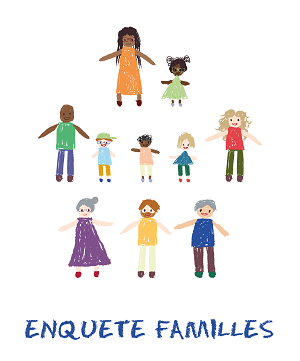Families survey
Every ten years or so, since 1954, INSEE has combined the population census with a survey on the theme of families, carried out among a large sample of people enumerated. The most recent survey took place in 2011.
The survey collects detailed information on family composition, family events, fertility and social and geographical origin. It thus enables analyses to be made of fertility and families that cross different dimensions: generations, social origins, geographical trajectories on numerous themes such as final offspring and birth calendar, and the family life of children of separated parents.
The size of the sample (400,000 people) enables analysis of rare populations: same-sex couples, same-sex-parent families, single fathers or fathers with sole custody of their children, orphanhood, adoptive families, etc.
The next edition of the Families survey will take place at the same time as the 2025 annual census survey, via a paper and internet collection. It will include the traditional themes of the survey, with the development of a new theme: family solidarity. For the first time, the survey will also include the overseas departments and regions.
News
Around 250,000 individuals aged 18 or over responded to the survey following their response to the census conducted in the first quarter of 2025, using the same response mode (paper or internet). The Internet portal for responding to the survey was closed on March 25. Collection ended with a response rate of 58% for the internet collection and a gross collection rate of 42% for the paper collection, but a sub-sample of non-respondents to the internet collection is still being surveyed by telephone by the service provider BVA since April 23, 2025. This telephone survey should be completed this summer. A call for qualitative post-surveys has been launched. The projects have been selected and the fieldwork can begin in September.
History of the survey
The "Family" survey was set up in 1954 on a sample of 300,000 women, to study fertility.
From the outset, it was linked to the census. It was repeated in the general population censuses of 1962, 1975, 1982 and 1990, with a fairly stable format and questionnaire.
In 1999, the survey evolved to place greater emphasis on family history and to better reflect its growing complexity. It was then extended to include men. A section on the use and transmission of regional languages was also introduced that year.
The 2011 Family and Housing survey provides a more detailed description of current marital and family situations, but collects less information on trajectories than the previous survey.



